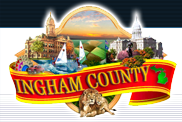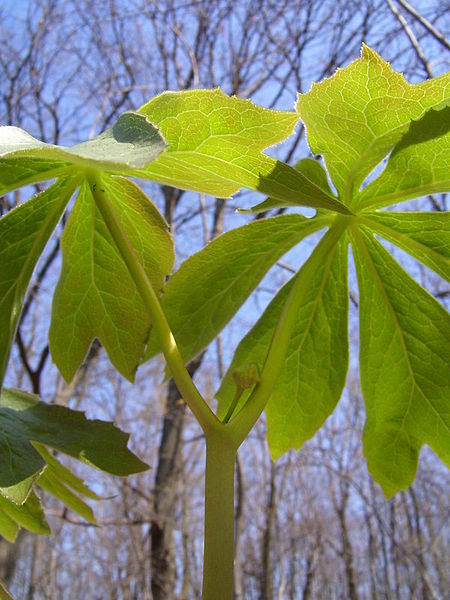Edible Weeds
 If you have ever taken a wilderness survival or wild edibles course, no doubt your eyes have already been opened as to the plethora of freely available, wild edibles right at your feet – often, right in your own yard!
If you have ever taken a wilderness survival or wild edibles course, no doubt your eyes have already been opened as to the plethora of freely available, wild edibles right at your feet – often, right in your own yard!
In addition to being incredibly frugal, eating wild plants is healthy, sustainable, and finding them can be a lot of fun, harking back to our hunter-gatherer roots. As with all things in the wild, we have to be certain we have the requisite knowledge to safely partake in this activity, however.
How do I know if a wild plant is safe to eat?
Remember, some plants are poisonous – even deadly in small amounts. We have to be careful of what we eat when its identity is uncertain. Some safe plants have close relatives which look nearly identical to the untrained eye, but are toxic to humans. For this reason, we need to be pretty darned sure we’re eating what we think we’re eating!
Too, some “safe” plants are only safe when cooked, or only have certain parts which are safe, while other parts of the same plant may be toxic. It’s always a good idea to do research before embarking upon a wild edible plant gathering trip.
Here’s how to verify the identity of your plant:
 1.) Unless you are absolutely certain you have successfully identified a given plant, you should bring in some additional help. Nearly every county in the U.S. has an Extension Office. What’s an Extension Office? It’s a source of (often free) advice, troubleshooting, and plant identification, among many other things. In our county, it is an extension of Michigan State University, which is widely known for its agricultural expertise.
1.) Unless you are absolutely certain you have successfully identified a given plant, you should bring in some additional help. Nearly every county in the U.S. has an Extension Office. What’s an Extension Office? It’s a source of (often free) advice, troubleshooting, and plant identification, among many other things. In our county, it is an extension of Michigan State University, which is widely known for its agricultural expertise.
These offices are generally grant-based, and are staffed with people who really want to help others. I call ours often! They will be happy to help you identify a given plant, and there are some things you can do to help them help you: 1.)Bring in the entire plant, including any flowers, berries, roots, and foliage. If that’s not possible, many offices will attempt to identify a plant from a clear photograph or small sample. 2.) Make notes about its habitat, including sun/shade, soil conditions, and the other plants you see around it.
2.) If visiting an Extension Office is not possible, there are a wide variety of field guides available to help you identify your mystery plant. We recommend the following:
 A Field Guide to Edible Wild Plants: Eastern and central North America (Peterson Field Guides) [Paperback] – A timeless classic from the master field guide, Roger Tory Peterson.
A Field Guide to Edible Wild Plants: Eastern and central North America (Peterson Field Guides) [Paperback] – A timeless classic from the master field guide, Roger Tory Peterson.
 Nature’s Garden: A Guide to Identifying, Harvesting, and Preparing Edible Wild Plants [Paperback] – This comprehensive book covers not only identification and collection, but also preparation of the plants
Nature’s Garden: A Guide to Identifying, Harvesting, and Preparing Edible Wild Plants [Paperback] – This comprehensive book covers not only identification and collection, but also preparation of the plants
 Edible Wild Plants: Wild Foods From Dirt To Plate (The Wild Food Adventure Series, Book 1) [Paperback] – An excellent resource from a renowned wild edibles expert, also covering everything from identification to preparation.
Edible Wild Plants: Wild Foods From Dirt To Plate (The Wild Food Adventure Series, Book 1) [Paperback] – An excellent resource from a renowned wild edibles expert, also covering everything from identification to preparation.
3.) Use our friend, The Googles. Searching for “Wild edible plants” yields a veritable plethora of information, including photos, videos, recipes, and more. As always, when taking advice from The Internet at Large, use good judgment – only take advice from credible resources. I prefer using college and university websites, or established scientists and researchers in the field, with a few ad hoc experts thrown in for good measure.
Finally, when in doubt, don’t eat it!
If you cannot establish the identity of your mystery plant, be safe rather than sorry. If you can preserve the plant for future identification, awesome. If not, take a photo or sketch if possible. Those berries may look delicious, but are they worth a horrible bout of diarrhea, or worse?
If you’re in the wilderness and your survival literally depends upon finding wild edibles, you can always perform the very meticulous and very time-intensive Universal Edibility Test.
Which plants have you eaten personally, and where are they found?
It’s been many years since I’ve taken any wilderness survival courses, so these days, I stick to the most basic stuff. However, back in the day, these found their way onto my plate:
- Burdock (Arctium lappa) – Found in nearly any habitat, particularly in those with disturbed soil
- Cattail (Typha) – Found in wetlands and wet marginal areas
- Clover (Trifolium) – Found in meadows, grasslands, and other sunny habitat
- Chicory (Cichorium intybus) – Commonly found along roadsides, in meadows, and in grasslands
- Chickweed (Stellaria media) – Often found in habitats with disturbed soil, such as gardens, public areas, along roadways, and in fields
- Dandelion (Taraxacum officinale) – Found in yards, in areas with disturbed and even hard-packed soil, and in most sunny habitats
- Lamb’s Quarters (Chenopodium album) – Fond of meadows and areas with disturbed soil
- Mayapple (Podophyllum peltatum) – Found in small to large groups in wooded areas
- Purslane (Portulaca oleracea) – Thrives in poor soil conditions, and favors disturbed soil
- Sassafras (Sassafras albidum) – Found in woodlands as saplings to adult trees
- Sheep Sorrel (Rumex acetosella) – Comnmonly found in fields, grasslands, marshes, and woodlands, most often with moist soil, this plant also favors disturbed soil
- Stinging Nettle (Urtica dioica) – Favors moist soil and riparian zones, also found in the woodlands themselves in shady habitat
- Thistle (Cirsium species) – Found in a wide variety of habitats, but prefers full sun
- Wood Sorrel (Oxalis) – Very common in woodlands
 Most of these are easily identifiable, and are abundant in Michigan; in fact, they are plentiful right in our own yard. Last year, I pitched more weeds than I ate, but this year I’m determined to do better. We have heaping tons of lamb’s quarters in our garden – why not make it into a salad green? We have a preponderance of dandelions in the yard, and last year I made salads and a sweet syrup from them – this year, I plan to do the same. Sadly, we don’t have much clover, but after it feeds the bees, it will feed us, too.
Most of these are easily identifiable, and are abundant in Michigan; in fact, they are plentiful right in our own yard. Last year, I pitched more weeds than I ate, but this year I’m determined to do better. We have heaping tons of lamb’s quarters in our garden – why not make it into a salad green? We have a preponderance of dandelions in the yard, and last year I made salads and a sweet syrup from them – this year, I plan to do the same. Sadly, we don’t have much clover, but after it feeds the bees, it will feed us, too.
The photo below is the atrocious state of weeds in our garden last summer – things were out of hand. Thinking about how I either threw them onto the compost pile or just let them go is disheartening right now, but last year was truly horrible for gardening, and I largely gave up midway through for a variety of reasons. A lot of what you’re seeing below are sorrels and lamb’s quarters – totally edible!

Legalities of harvesting wild plants
Some wild plants are protected under the law – this means you cannot legally harvest them for food or for any other purpose. This link lists endangered plants in Michigan, and here’s a handy tool to search your area within the United States. Additionally, harvesting on public lands is often prohibited by local or state ordinance, so check all appropriate rules before you have a conversation with a Department of Natural Resources officer who catches you in the act. “Take nothing but photos, leave nothing but footprints” is excellent advice when visiting public lands – don’t be a jerk!
If harvesting on private property, be sure you have the permission of the landowner; otherwise, you’re trespassing, and could be in violation of other laws, as well. If you’re harvesting common weeds, check with your friends and neighbors to see if they would allow you to harvest their weeds, thus saving them some work! Be sure to ask whether they have been sprayed with pesticides, herbicides, or fertilizer before you consume them.
Wild Medicinals
We’ll have a post in the future about using wild plants as medicinals/remedies, with expertise from a guest poster. There’s a whole medicine cabinet, likely right outside your window.
Mushrooms
 Hunting mushrooms is a science unto itself, and requires even more expertise than simply finding edible weeds. Some mushrooms are absolutely deadly, and have lookalike edible kin. I can’t offer any advice on mushrooming myself, but there are many resources out there; I recommend taking an in-person class which includes field trips. An important part of mushrooming is paying attention to habitat, and noticing subtle visual cues between species. Having an expert walk you through personally is invaluable. Right now, the only mushrooms I know I can identify are morels and chanterelles.
Hunting mushrooms is a science unto itself, and requires even more expertise than simply finding edible weeds. Some mushrooms are absolutely deadly, and have lookalike edible kin. I can’t offer any advice on mushrooming myself, but there are many resources out there; I recommend taking an in-person class which includes field trips. An important part of mushrooming is paying attention to habitat, and noticing subtle visual cues between species. Having an expert walk you through personally is invaluable. Right now, the only mushrooms I know I can identify are morels and chanterelles.
Wrapping it all up
Wild edible plants are a free source of culinary delight and great nutrition, provided we research our species carefully, prepare them properly (if required,) and harvest them legally and sustainably.
I’d love to hear your tales of using wild edibles, from common back yard weeds to elegant and hard-to-find mushrooms – do tell!

